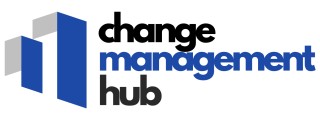-large-teaser.webp)
Understanding Procurement Benchmarking
Exploring the Procurement Benchmarking Process
Procurement benchmarking is a potent strategy employed by organizations to enhance their operational efficiency and strategic positioning. In essence, it involves comparing an organization's procurement processes and performance metrics against best class standards or peer companies to identify opportunities for improvement. This process is crucial for gaining valuable insights into strategic supply chain management and enhancing overall business performance. The practice of benchmarking procurement is not merely about matching competitors but entails a deeper analysis to lift company performance by setting ambitious improvement targets. This involves examining key performance indicators (KPIs), such as cost reduction, lead times, and supply chain risk management, to gauge how an organization's practices stand relative to others within the industry. With the advent of advanced data benchmarking technologies, organizations can now seamlessly gather and analyze vast amounts of procurement data. This not only helps in refining supply chain strategies but also supports continuous improvement efforts by shedding light on potential areas for cost optimization and process enhancement. For procurement organizations aiming to reduce costs and embrace continuous improvement, leveraging best practices in benchmarking can serve as a strategic lever to drive class-leading outcomes. Engaging in external benchmarking and adopting a data-driven approach provides the blueprint for procurement professionals to navigate the complexities of today's dynamic business environments. Understanding the strategic relevance of procurement benchmarking can significantly contribute to change management initiatives within organizations. As explored here, the role of these practices in driving positive business transformation cannot be underestimated. Discover more about how procurement benchmarking integrates with broader change management strategies.The Role of Procurement Benchmarking in Change Management
The Interplay Between Benchmarking and Change Management in Procurement
Implementing procurement benchmarking can significantly influence change management strategies within organizations. By benchmarking procurement processes, companies can gain valuable insights into their supply chain operations and performance metrics. These insights can guide change management efforts by highlighting areas for improvement and revealing best practices that can be adopted to enhance efficiency. Incorporating benchmarking data into change management involves comparing internal performance against industry standards or external benchmarks. This practice not only aids in identifying gaps but also helps in setting realistic targets for improvement. By doing so, organizations can effectively manage supply chain risk, reduce costs, and enhance strategic decision-making. Procurement benchmarking provides a data-driven foundation for continuous improvement in procurement functions. It ensures that change initiatives are aligned with key performance indicators (KPIs) that matter most to the business, thus fostering an environment of continuous improvement. Moreover, benchmarking procurement processes supports organizations in achieving best-in-class performance by facilitating external benchmarking. This means learning from the best in the industry, adopting proven practices, and strategically implementing them to optimize procurement operations. For businesses looking to enhance their procurement strategies through effective change management, embracing benchmarking can serve as a crucial tool. It allows for a thorough assessment of the current procurement landscape and drives the adoption of innovative technologies to stay competitive. To dive deeper into effective strategies for managing risk and crafting comprehensive change management plans, consider exploring resources on succession planning which can offer further insights on aligning procurement strategies with business objectives.Key Metrics for Effective Procurement Benchmarking
Evaluating Performance through Strategic Metrics
Procurement benchmarking involves comparing specific key performance indicators (KPIs) that provide valuable insights into a procurement organization's effectiveness. These metrics are essential for companies aiming to achieve continuous improvement in their supply chain and reduce costs effectively.
Key metrics used in procurement benchmarking include:
- Cost Savings: Tracking reductions in procurement costs over time can heavily influence a company’s profitability.
- Lead Times: Analyzing the time taken to complete procurement processes allows businesses to identify delays and develop strategies to streamline operations.
- Supplier Performance: Assessing suppliers' performance can help organizations mitigate supply chain risks and promote reliable service levels.
- Risk Management: Metrics related to risk management focus on identifying potential supply chain disruptions, enabling organizations to prepare contingency plans.
- Data-driven Decisions: The use of data benchmarking enables companies to base procurement decisions on solid evidence, minimizing guesswork and enhancing business operations.
Using these KPIs, companies can perform external benchmarking, which involves comparing their internal performance to industry standards. This practice can unveil areas where they may lag behind the industry, offering opportunities for strategic improvements and keeping up with best class practices.
The proper use of benchmarking data is crucial for enhancing procurement performance. Procurement processes should align with an organization's strategic goals and involve a comprehensive analysis of benchmarking procurement data. As organizations set ambitions to reach new heights, the integration of advanced technology plays a vital role. To ensure seamless integration, organizations may need to consider flexible solutions that can adapt to dynamic market needs.
Challenges in Implementing Procurement Benchmarking
Confronting the Hurdles in Adoption
When embarking on the journey of procurement benchmarking, businesses often encounter numerous challenges that can make the process difficult to implement and sustain. Understanding these obstacles can pave the way for smoother transitions and more successful outcomes.
One of the primary challenges is navigating through vast amounts of data. Procurement organizations must be adept at collecting and analyzing relevant benchmarking data to ensure they derive valuable insights. Without reliable data, the risk of making inaccurate comparisons increases, potentially leading to suboptimal decisions in supply chain management.
Another significant hurdle lies in aligning internal processes with industry best practices. Companies often find it challenging to adapt their current procurement processes to meet new performance standards. This can result in resistance to change, as individuals within the organization may be reluctant to modify their established routines.
- Organizations must prepare for potential costs and resource allocation required during the benchmarking process. Allocating sufficient resources to areas like technology, data analysis, and staff training can expedite the integration of new procurement practices while minimizing disruptions.
- Chain risk management is another concern. By comparing performance metrics against industry leaders, organizations face the pressure of addressing their vulnerabilities within the supply chain. This involves assessing and mitigating potential risks continuously.
Despite these challenges, implementing procurement benchmarking effectively can lead to continuous improvement and risk reduction, streamlining supply chains for better company performance. By embracing strategic planning and leveraging technology, businesses can overcome these barriers to achieve their best in class status.
Best Practices for Successful Procurement Benchmarking
Embracing Strategic Frameworks for Effective Benchmarking
Implementing procurement benchmarking involves more than just setting metrics. It’s about integrating strategic frameworks to enhance the entire process. Here are some key practices that organizations can adopt to ensure success:- Emphasize Continuous Improvement: It’s vital for procurement organizations to focus on continuous improvement. This involves comparing current performance metrics with historical data to identify trends and areas in need of refinement.
- Utilize Data-Driven Decisions: By leveraging benchmarking data, businesses can make informed decisions. Data benchmarking offers valuable insights into procurement processes, highlighting areas where companies can reduce costs and streamline the supply chain.
- Incorporate Advanced Technology: Utilization of cutting-edge technology can greatly aid in tracking key performance indicators (KPIs). This ensures that procurement efforts are aligned with the broader business objectives, facilitating class-leading performance.
- Practice Risk Management: Addressing chain risk is crucial. Strategic approaches to risk management mitigate potential downfalls and ensure smooth procurement operations. See suggested practices via crafting effective strategies for managing risk in change management.
- Engage in External Benchmarking: To gain insights into industry standards, external benchmarking provides an opportunity to weigh your procurement strategies against best-in-class practices. This comparison helps uncover gaps and opportunities for improvement.
- Foster a Culture of Collaboration: Encourage open communication across the supply chain. Engaging various departments leads to developing resilient procurement strategies that address diverse risk factors.













